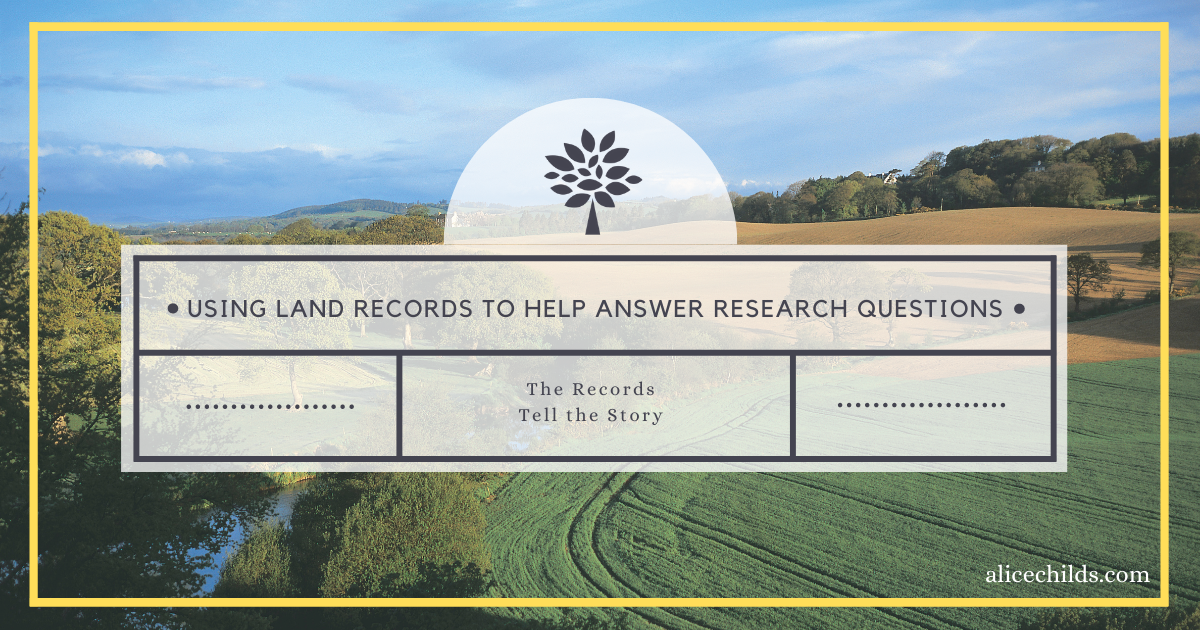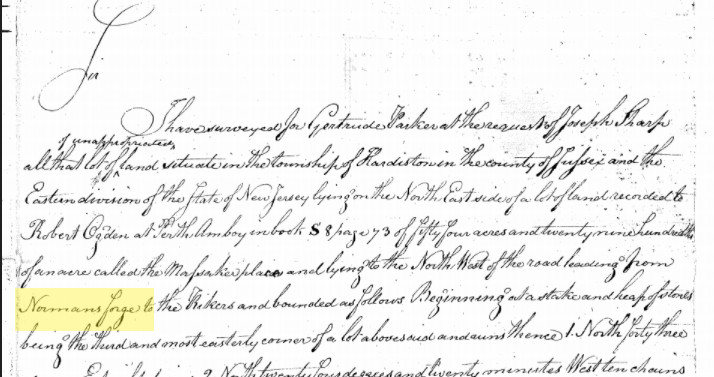
In my last post, I wrote about land records in state-land states. Today I will share examples of a few different land records I have used in my research and how they can be used to answer research questions.
At the very basic level, a deed might name relationships or at least provide clues about relationships. For example, when a man sold a piece of property, his wife was often named on the deed: “John Smith and his wife Mary…” Here is an example of a deed that provides even more information. “Louisa Ann Scofield widow of Peter Scofield deceased and daughter of Pero Johnson deceased of the city of New York” sold property to Jacob P. Millford. If the research objective is to identify Louis Ann Scofield, we have just learned the name of Louisa’s husband, her maiden name, and her father’s name, along with her residence in New York City from a single sentence in the deed.

Knowing who owns the neighboring land for a tract being transferred in a deed can also provide helpful clues. In the deed below, David Norman and his wife Leah (whose maiden name Davenport was already known) sold a parcel of land. The description reads, in part: “Begining [sic] at a stake in the middle of Rockaway River in the line of Cornelius Davenports land which stake stands for a corner of land Phenise & wife conveyed to John Norman…” If the research question is “Who were the parents of David Norman and Leah Davenport?” Cornelius Davenport and John Norman are two persons who definitely need to be identified. Could they be David and Leah’s fathers?

Sometimes land records can provide unexpected evidence. The New Jersey State Archives has a collection titled “Early Land Records, 1650s-1900s.” This collection is indexed and each search results in an abstract of the original record. A digital copy of the original land record can then be ordered for a small fee. Searching for the surname “Norman” in this collection resulted in a number of records. One was of particular interest. This record was a return of survey and was not for a land transaction involving any member of the Norman family, but the property description stated that the property was “lying to the North West of the road leading from Normans forge to the Rikers…” Earlier research suggested that the Norman family owned and operated a forge. If the research objective is to discover more about the Norman forge, this record provides evidence for the existence and approximate location of that forge. I ordered the original record from the archives and received a digital copy in just under a month.

Another way to use land records is to trace landowners over time. Knowing who the prior owner of the property was can provide clues about relationships. Consider this example from Morris County, New Jersey. The property description includes two phrases, “…the same lots which the said Peter Norman [grantor] bought of Oliver Norman who bot [sic] of Robert Ogden…” and “The second lot or tract is the same lot which the said Peter Norman bought of James Scott who bought of Robert Morris…”

The history of earlier transfers of these parcels of land revealed land transactions between two brothers, Oliver and Peter Norman. In an authored history, the Norman brothers were said to have been “tenants of the Ogdens.” If the research objective is to discover more information about this tenancy, the deed notes a land transaction between Oliver Norman and Robert Ogden and provides evidence that perhaps they were tenants of Robert Ogden and eventually at least one brother purchased some land from him, later selling the same land to another brother. Although not the case in this example, deeds will often refer to the volume and page number where the prior transactions were recorded, which makes tracing prior property owners even easier.
There are a wide variety of sources that contain land records we can use to answer our research questions. By looking in the FamilySearch catalog under United States, New Jersey, Sussex Land and Property records, I found a book of abstracts of estate divisions. Included in the book was the estate division of William Norman, dated May 5, 1848. If my research question was “Who are the children of William Norman?” this record provides the names of two of them. It is possible that these were his only children, although he could have had others who were not named on this document. We can also presume that Peter died prior to 5 May 1848 and that because his children were “minors, under 21,” they must have been born between 1827 and 1848. Furthermore, the petitioner was James Newman, Jr. and the document states that William’s daughter Mahola was James Newman’s wife. From this one document, a great deal of genealogically significant information has been gleaned. A companion volume includes a map of and additional notes about the estate division.

These are just a few examples of how land records can benefit our research. I hope that from this small sampling, you will be able to see how beneficial land records are in helping to solve research questions. If you haven’t been using land records in your research, take the time to seek them out. You might be surprised at what you uncover as you search these valuable records.
